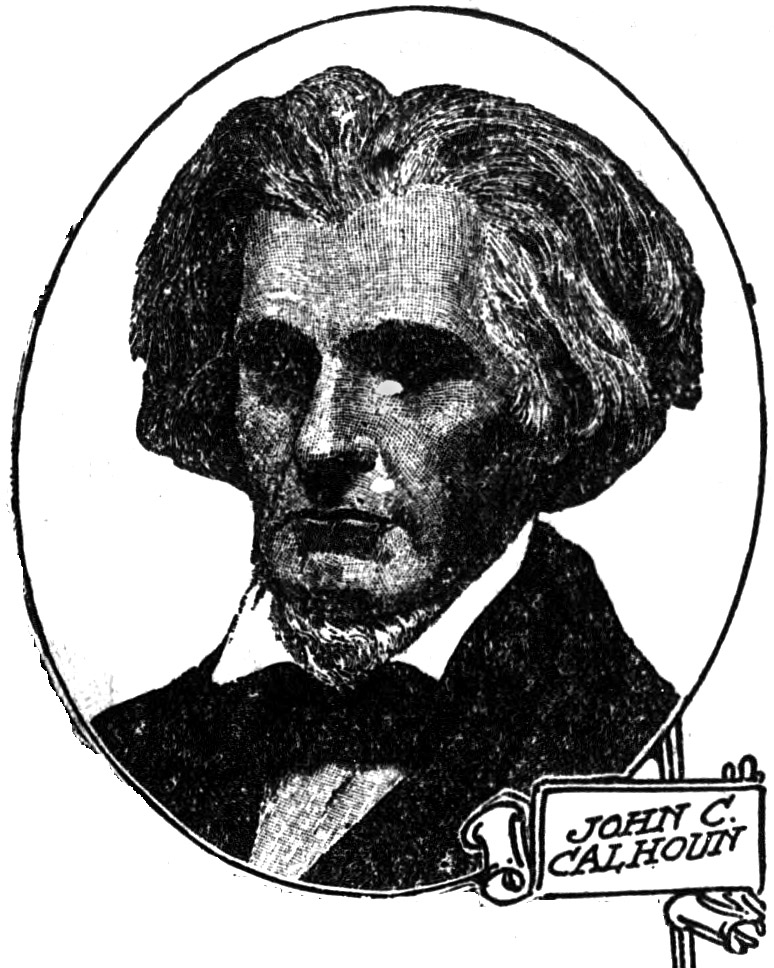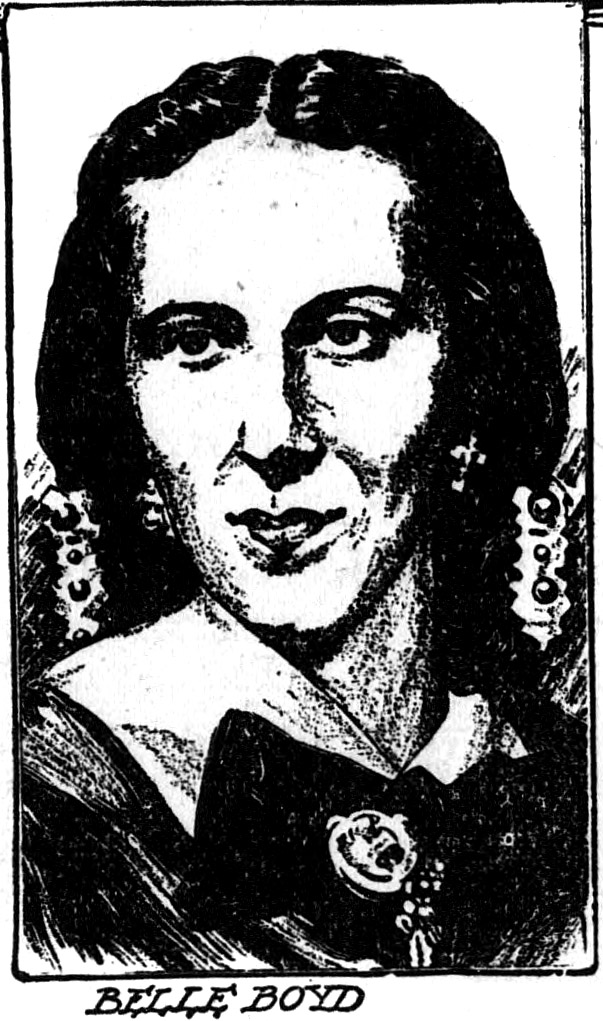
by Elmo Scott Watson
Aug. 1, 1930.

Photo by Underwood & Underwood—
THE United States Supreme court is soon to have a new home in the National Capital befitting the dignity of that important branch of the federal government, but the selection of a site for this temple of justice has meant the passing of one of the most historic buildings in Washington. For 115 years there stood at the corner of Maryland avenue and First street, N. E., in the block adjoining the Library of Congress, a building, known as the “Old Brick Capitol,” because at a critical period in our history It housed the government of the United States. But now it is no more. It has been torn down so that upon its site may be erected the stately new home of the national Judiciary.
The Old Brick Capitol came into being as the result of one of the greatest catastrophes which ever befell the republic—the burning of the Capitol and other government buildings in Washington by the British during the War of 1812. As we look back upon It now, it seems strange that our government should have been so apathetic and the citizens of Washington so indifferent to danger as they were in August, 1814, when a British fleet sailed into Chesapeake bay and anchored off Fort McHenry. If they gave the matter any thought at all, it was that New York or Baltimore might be attacked, but it seemed to occur to no one that the National Capital was in any serious danger.
For one thing, they counted on Fort McHenry to keep the invaders from coming up the bay, and if the enemy should attempt a naval attack on Washington byway of the Potomac river, they seemed to believe that the antiquated cannon placed at several points below the city would hold them off. It was no tribute to the intelligence of the British leaders to believe this and, as might have been expected, the enemy did exactly what no one seems to have thought they would do. They launched a land attack from the other direction and so swift were their movements and so inadequate the preparations by the Americans for guarding against such an emergency that the red coats were almost upon the city before they were discovered.
Then there was a great scurrying around and General Winder hastily assembled a force of some 6,000 men to halt the invaders. Five hundred of his men were sailors but the remainder were raw and undisciplined militia, and It was with this force that he faced an army of 5,000 British, most ly sailors and marines, under Admiral Cockburn and General Ross at Bladensburg. Americans to this day remember with shame the “Bladensburg races” as the newspapers of the day called the rout which followed. For although the 500 American sailors made a brave stand, the militia ran and President Madison, who was with the troops, was swept along with them in their panicky flight. In the meantime Dolly Madison, the wife of the President, was proving herself a heroine. When news of the Bladensburg disaster reached Washington, most of the government officials and hundreds of citizens fled incontinently with no thought of trying to save any thing from the invaders. But Dolly seized the Declaration of Independence, the Constitution of the United States and other priceless documents, loaded them and other valuables of the government in a farm wagon and took them across the Potomac into Virginia, where she was later joined by the President, who was forced to hide out in the woods as the enemy Marched into the Capital.
The British made a triumphant entry of it on August 24. Entering the Executive Mansion, the British officers, according to their own account, drank the British king's health in the American President's wine and then set fire to the building. Next they visited the Capitol and Admiral Cockburn took his seat in the chair of the speaker of the house of representatives. Springing to his feet, he shouted, “Shall this harbor of Yankee Democracy be burned? All for it will say ‘Aye!’” Shouts of “Aye! Aye” filled the room and a few minutes later the torch was applied. Next they destroyed the treasury building, set fire to other government structures, and when they departed they left behind them a city virtually in ashes.
Washington, with its smoking ruins, was in a critical situation. Many members of congress had never been fully reconciled to moving the National Capital from old-established Philadelphia to this “backwoods village,” and after the scattered legislators had reassembled, a movement was started to abandon Washington and reestablish the seat of government in Philadelphia. Then a group of leading Washington citizens got busy. They determiried to provide, at their own expense, a suitable meeting place when the new congress convened.
It was this structure which for the next four years housed the government of the United States. President James Monroe took the oath of office on a platform erected on the north side of the building, the first outdoor inauguration ceremonies since Washington's in New York, and the one which established the precedent for the induction into office of later Presidents. But even more important during the four eventful years of the Old Brick Capitol's early history were the acts of the Fourteenth and Fifteenth congresses which met in it.
They granted a charter for 20 years to that bank of the United States against which Andrew Jackson waged his famous fight. They appropriated a million a year for eight years for naval construction. They authorized the President to engage John Trumbull to make his four big paintings for the new Capitol that was to be. They granted to Revolutionary veterans pensions of S2O a month to officers and $5 to privates, on “proof of need.” They enacted, on April 4, 1818, the law adopting Capt. Samuel Chester Reid's design for the national flag. They ratified the treaty with Great Britain for the restriction of naval forces on the Great Lakes. They authorized the President to take possession of East and West Florida. They admitted Mississippi, Indiana and Illinois into the Union; made organized territories of Alabama and Arkansas and authorized Alabama to take steps for statehood.
Perhaps most important of all was the long debate ever the request of Missouri to be admitted as a state. The request was not granted at that time. But John W. Taylor, a representative from New York, introduced an amendment to the bill for the admission of Missouri, providing that no slavery nor involuntary servitude should exist north of the line of 36 degrees 39 minutes north latitude. This he was finally prevailed upon to withdraw. But in the next congress it was taken up again by Henry Clay and was pressed to adoption as the famous Missouri compromise.

In the meantime, work was going forward on the rebuilding of the Capitol, and on December 6, 1819, just four years and two days after the Fourteenth congress assembled in the Old Brick Capitol, the Sixteenth congress assembled in the new marble Capitol, the first unit of the great structure which houses our government today. The Old Brick Capitol was turned over to the Circuit court for its use—an appropriate predecessor of the new home of the Supreme court which is to be built on its site. Later the Old Brick Capitol became a fashionable boarding house and served as a home for many notables during the next three decades. In it John C. Calhoun, statesman, senator and Vice President, lived for nearly a quarter of a century, and he died in one of the rooms on the second floor in 1841.

The Civil war brought to the Old Brick Capitol its second era of fame. Commandeered by the War department for use as a house of detention, it became known as Old Capitol Prison and held within its walls scores of so called “prisoners of state” —blockade runners, foreign army officers captured while serving in the Confederate forces, conscientious objectors, Union deserters and Confederate spies. Undoubtedly the most famous of all these was the betwitching woman spy for the men in gray—Belle Boyd. While Belle Boyd was incarcerated there, after her first capture, she was accustomed to give a concert in her room every night for the benefit of other prisoners, and this invariably began with the singing of “Maryland, My Maryland.” She was released in exchange for a Union general and sent South under a flag of truce. But she was soon at her work again, was again captured and once more sent to Old Capitol. During this period the prison was also the scene of one grim event—the execution of Maj. Henry Wirz, keeper of the Confederate prison camp at Andersonville, Ga. Tried by a military tribunal, presided over by Gen. Lew Wallace, later famous as the author of “Ben Hur,” Wirz was convicted of conspiracy to undermine the health of Union prisoners and of violating the rules of civilized warfare and was hanged on a gallows in the prison courtyard on November 10,1805.
After the war the Old Brick Capitol was remodeled and converted into three private dwellings, which were occupied by Associate Justice Field of the Supreme court, General Dunn and Mrs. Condit-Smith. In this period it was the scene of one more event of historic interest. In one of the drawing rooms Miss Louisa Condit-Smith became the wife of Maj. Gen. Leonard Wood, soldier, territorial administrator and candidate for the nomination for the Presidency.
In 1921 Mrs. O. H. P. Belmont bought the building and presented it to the National Woman's party for its national headquarters. It became a gathering place for the feminists, not only of America but of the whole world, and there was carried on the work for the freedom and equality of women. Finally the government, in seeking a site for the new Supreme court building, selected this one, instituted condemnation proceedings two years ago, and this year the work of razing it began.
© The Western Newspaper Union.
